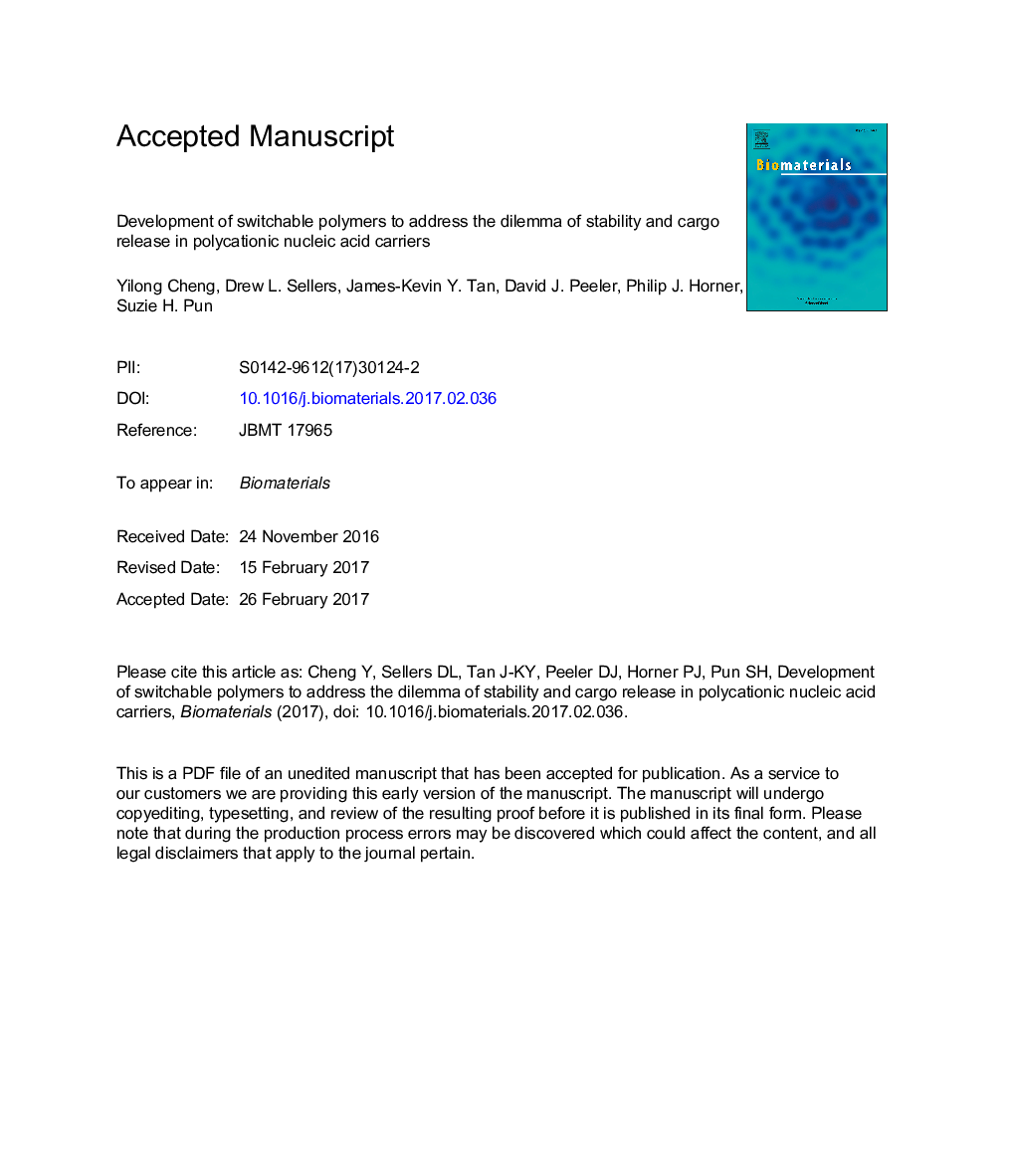| Article ID | Journal | Published Year | Pages | File Type |
|---|---|---|---|---|
| 4752426 | Biomaterials | 2017 | 34 Pages |
Abstract
Cationic polymer gene delivery vehicles that effectively resist premature serum degradation often have difficulty releasing their nucleic acid cargoes. In this work, we report a pH-sensitive polymer (SP), poly(oligo(ethylene glycol) monomethyl ether methacrylate)-co-poly(2-(dimethylamino)ethyl methacrylate)-block- poly(propargyl methacrylate-graft-propyl-(4-methoxy-benzylidene)-amine) (p(PMA-PMBA)-b-(p(OEGMA-DMAEMA)), for successful in vitro and in vivo gene transfer. In the physiological condition, the hydrophobization of p(OEGMA-DMAEMA) polycations by p(PMA-PMBA) significantly enhanced the stability of its polyplexes counterpart. In endosomes, the polymer undergoes an acid-triggered hydrophilic transition through the cleavage of benzoic imines, thus allowing the vector to quickly release nucleic acid cargo due to the loss of hydrophobic functionalization. Compared to a pH-insensitive polymer (IP), SP exhibited more significant luciferase plasmid delivery efficiency with HeLa cells in vitro and with in vivo intraventricular brain injections. Therefore, the polymer designed here is a good solution to address the dilemma of stability and cargo release in gene delivery, and may have broad potential applications in therapeutic agent delivery.
Related Topics
Physical Sciences and Engineering
Chemical Engineering
Bioengineering
Authors
Yilong Cheng, Drew L. Sellers, James-Kevin Y. Tan, David J. Peeler, Philip J. Horner, Suzie H. Pun,
